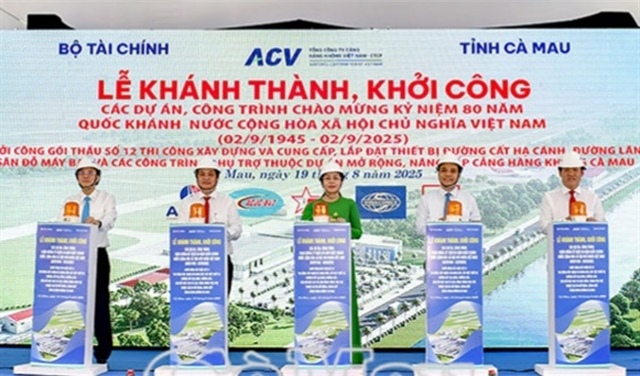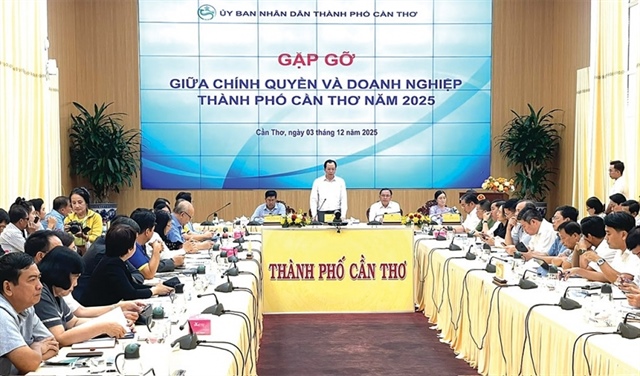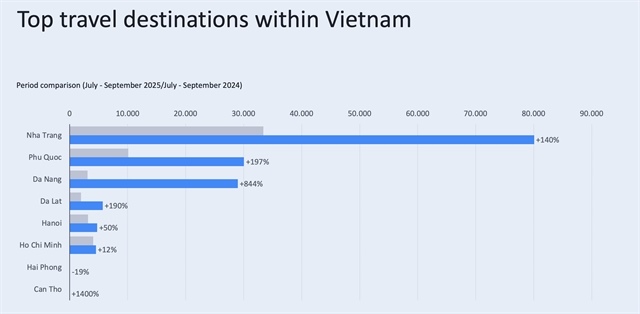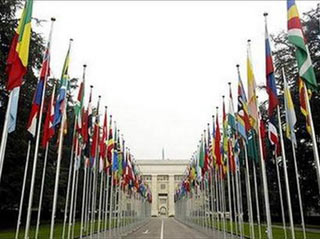VN urged to court investors with local content ratio boost
VN urged to court investors with local content ratio boost
The Vietnamese Government should issue support policies to help increase local content ratios for raw materials and parts, speakers said at a seminar held on Thursday in HCM City.
Yasuzumi Hirotaka, executive director of Japan External Trade Organisation (JETRO), said that Vietnamese businesses should consider the supply of locally produced raw materials and parts as a survival matter since this would be a decisive factor in retaining and attracting foreign investors, including Japanese.
The increase of local content ratios for raw materials and parts would help Vietnamese SMEs cut production costs and improve their competitiveness.
According to a survey by JETRO, the localisation rate in Viet Nam is only 28 per cent, while the ratio in China is 61 per cent, and Thailand 53 per cent.
Although many foreign companies are eager to find long-term investment opportunities with Viet Nam, they hesitate because of Viet Nam's underdeveloped support industries.
Pham Ngoc Hung, deputy chairman of the HCM City Union of Business Association, said foreign investors often have to import materials and components from abroad, which is detrimental to production and product prices, making it difficult to compete with rivals.
"This makes it difficult for Viet Nam to call for investment from big Japanese businesses," he added.
Japanese companies look to Viet Nam because of cheap labor. However, meeting participants said this was not sufficient because the support industry remained underdeveloped.
Hirotaka asked the Vietnamese Government to create a support policy to promote human resource training in industry.
Japanese investors are concerned also about low legal compliance, unclear tax and fee regimes, and informal costs.
A JETRO survey of Japanese-affiliated companies in Asia and Oceania pointed out that administrative procedures in Viet Nam are complicated, followed by Myanmar and Bangladesh.
In addition, the cumbersome tax system in Viet Nam was just behind India.
Hirotaka said that "tax difficulties and entanglements can cause big risks for trading activities of businesses."
JETRO surveyed Cambodia, Laos, Myanmar, Viet Nam, Bangladesh, India, Pakistan and Sri Lanka.
Investors also became frustrated when laws and decrees were changed frequently and not implemented in a consistent manner across Viet Nam.
They added that slow administrative processing and required duplicates of many papers in the central region and localities were big challenges.
Investment orientation
Hirotaka warned that Viet Nam would lose investors if it did not improve the investment environment.
It is expected that in the future Japanese businesses in the fiber and manufacturing sector will move their factories and distribution systems from China and Thailand to Viet Nam, Indonesia and Philippines.
Apart from key areas such as HCM City, Dong Nai, Binh Duong, Long An and Ba Ria Vung Tau, investment destinations would also include the Mekong Delta region, Binh Phuoc Province, Lam Dong and the North.
According to the Foreign Investment Agency, among the 10 biggest FDI projects in Viet Nam last year were six investment projects from Japanese businesses in sectors such as real estate, manufacturing and processing, logistics and transport.
Hung said 60 per cent of Japanese businesses can generate profits from operations in Viet Nam. The percentage is higher than in China (57.2 per cent)
Nearly 66 per cent of Japanese enterprises in Viet Nam have plans to expand business in one or two years.
As of June this year, Japan had 1,990 investment projects in Viet Nam with total investment capital of US$33 billion. Newly registered capital of Japan in the first six months of this year was $4 billion and continues to increase.
vietnamnews



















